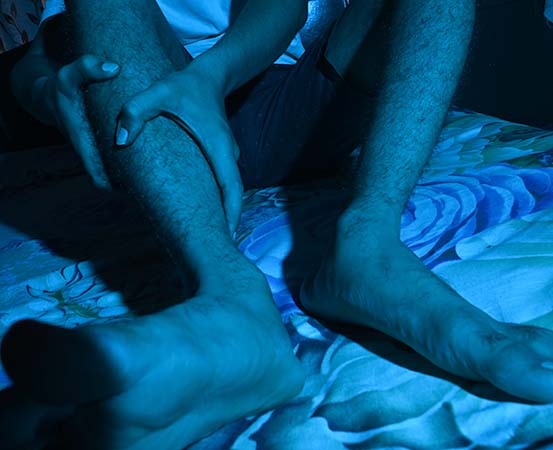
Night leg cramps, or nocturnal leg cramps, lower the quality of the person’s sleep and can affect their life, too. The cramping is usually caused by the sudden tightening of the muscles in the calves or lower limbs while sleeping. It lasts from a couple of seconds to a few minutes and can be painful, and, needless to say, annoying.
Usually, these cramps affect a group of muscles in the calves. It can also occur in larger muscles like the hamstrings and the gluteal muscle group. Immediate relief measures include massaging or stretching the affected area. However, many factors contribute to night leg cramps, and finding a permanent cure involves solving the root cause or lifestyle issues, if any.
What causes night leg cramps?
“Two of the common causes are dehydration and a sedentary lifestyle,” informs Bishwaranjan Das, musculoskeletal and sports injury physiotherapist, Manipal Health Enterprises, Mangalore, Karnataka. “They decrease muscle flexibility drastically, so any sudden mobility in the muscles could lead to a cramp.”
Das shares that medical reasons could lead to this issue, too. “People with kidney or liver issues like liver cirrhosis or damage are highly likely to struggle with nocturnal cramps. Thyroid- and spine-related nerve problems and fluid imbalance in women during the menstrual cycle leading to dehydration are other common causes.”
Electrolyte imbalance, which results from low sodium levels in the body, is another culprit causing muscle cramps.
Why do calf muscles cramp up?
Das shares, “90% of the time night leg cramps occur in the calf muscles.” These muscles function throughout the day — bearing the body weight and pumping blood from the legs back to the heart. “Moreover, the contraction and release of muscle fibers goes on constantly during the day,” he adds. As a result, they are the most fatigued muscles in the human body. Hence, when there is sudden movement due to tossing or turning in bed, it can lead to a muscle cramp.
Night leg cramps treatment
Here are some common ways to treat night leg cramps:
- Address the causative factors that lead to the sudden tightening of the affected muscle. Remedial measures include staying hydrated and maintaining optimal electrolyte levels in the body.
- Follow an active lifestyle with regular workouts to strengthen the muscles.
- Massage the cramped site and use a hot water bag for relief.
- Once the muscle spasm has reduced, you can practice light stretching exercises for the muscle.
Ensure you don’t vigorously stretch the affected muscle. Such movements could lead to more muscle spasms and increase the chances of muscle tear or injury.
Takeaways
- For treating nighttime leg cramps, start by identifying the causative factor.
- Nocturnal cramps mostly occur in the calf muscles.
- The primary causes for nocturnal leg cramps are dehydration, a sedentary lifestyle, and, in some cases, underlying issues with the nerves.
- Vigorous movement at the time of cramp should be avoided as it increases the chances of muscle tears and injury.

















